My time in Peru marked a change in
travel style, as I went from going solo to enjoying the company of
family and friends for three weeks. My dad, John, and uncle, Paddy,
joined me from the UK, while Paddy's friend Loring and her friend
Dalene joined us from the USA. The five of us met in Lima and then
journeyed together for a while – a welcome change from my solitary
road tripping to date.
The Peru gang
Lima is the crowded capital of Peru;
smoggy, chaotic and crammed with a third of the country's population.
We caught up over rooftop beers looking out over the main plaza,
enjoyed a couple of days in Miraflores, the seaside district, and of
course had our fill of delicious ceviche and pisco sours, the
national dish and drink of Peru.
The main plaza
Looking up to houses on the mountains
Cervecas with Paddy and Loring
Poetry stairs at the House of Peruvian Literature
Wooden balconies from colonial times
Inside one of Lima's many churches
Church of San Francisco
Human remains from the Inquisition in catacombs under the church floor
One of Lima's many shrines
Another church
House of Peruvian Literature
'The Kiss', Miraflores
'Play me I'm yours': Last played one of these in Sydney!
With dad in Miraflores
Crazy building painters
Washing
Awesome coke ad near the airport
After a few excruciating hours on
various websites and phones, testing my newly-acquired Spanish to its
full extent, we had onward travel plans to Puno and then on to Cusco.
We flew to the hilariously-named International Airport of Juliaca,
where we were greeted at 9pm by a deserted car park, with only two
taxis loitering for passengers, both driven by guys named Carlos. We
had no plans other than to rock up to Puno and try to get beds for
the night, and the Carlos' obliged with both. The taxi ride was
certainly one of the hairiest of my life, although it only set the
tone for all driving thus far in Latin America. We dashed along
single-lane war-torn-looking dirt roads with no lighting, Carlos
having little regard for road rules and always taking bends in the
left hand lane instead of the right, with no concern about oncoming
traffic. Let's just say I held my breath a lot on this hour-long
trip. Finally housed in our cosy hotel (the altitude getting to all
of us as we climbed the stairs!) we ventured out for a late pizza and
beer, so tired that we even laughed at Paddy's jokes!
The gang arrive at the airport
Going loco over dinner
Some kind of youth military parade in Puno's main square
After stocking up on altitude tablets the next morning we made our way to Lake Titicaca, walking through Puno's street markets and past its municipal buildings. I caught my first glimpses of the now-familiar Cholitas and surreptitiously tried to photograph them. Common throughout Latin America these are women in traditional dress – lace tops, wide velvet skirts with lots of underskirts, baggy stockings and flat shoes, hats often modelled on bowlers and invariably carrying a large colourful blanket on their back, fastned at their neck and full of their wares, food or (usually) sleeping children. They must have shoulders of steel, these women, I can't even carry as much as they do in my backpack, and that distributes the weight far more efficiently! They seem to me to be the backbone of Latin America, as they are conspicuously hard-working and industrious.
Lake Titicaca is the largest lake in South America, and at 12,507 feet it's also the highest navigable lake in the world. We caught a boat out onto the Lake to see the floating islands. These are large islands made of densely-packed reeds, upon which entire villages live, fish, eat and sleep, regardless of the fact that there's very little between them and the lake itself! It was fascinating to see how these communities lived, with their simple lives, traditional houses and uncomplicated ways.
The floating reed islands
Fish laying out to dry
Floating island kid
Gazing out on Lake Titicaca
Paddy on his boat
This is what the reed islands look like underneath
Paddy looking out towards some little hotels
Paddy and dad walking through Puno square
On the way back we enjoyed another precarious ride, this time in a customised motorbike with a seat on the back – the driver and three passengers on a small motorbike – crazy! In the evening we dined on Alpaca, trout, quinoa – more traditional Peruvian dishes. And then it was farewell to Puno.
The 10-hour Puno to Cusco train ride was without doubt the greatest train ride of my life. Taking a leisurely pace through the Peruvian countryside, it was like the Orient Express of Latin America. Our tables were delightful and we enjoyed a delicious three-course meal as we watched the world go by. There was a wonderful viewing carriage at the back of the train – predominantly glass windows and ceiling with an open end for optimum photographing. Each change in landscape brought gasps of delight from everyone. Locals stopped and waved at the train and kids ran alongside. We even rode through a market where vendors left their wares on the tracks for the train to ride over! A truly stunning way to travel. Paddy wowed the train with his Pisco Sour-making demonstration while unfortunately dad succumbed to altitude sickness and slept for much of the journey. The train stopped just once, for us to get out and visit a little church, as well as sample some local wares. Paddy and the girls bought some beautiful hand-woven fabric while I made friends with a lamb and a llama! Paddy also tried to abduct the first of many scruffy little Peruvian children on the trip.
There's even a shrine in the train station!
All aboard the Andean Explorer!
In the viewing car
Leaving Puno
Woman carrying child on her back
These guys rode alongside us for a while
View from the back of the train
Roadside shrines
Boys and beer
Caught snapping!
Llamas
Paddy was enchanted by the local kids
Roadside Cholitas
Election art
Men at work
The bicycle is the hub of industry
Football pitches are a big priority here
Grumpy old lady
More Cholitas
Converted motorcycle
Woman of industry
Trackside market
Enjoying Pisco Sours
Rainbow!
I don't think Paddy stopped smiling the whole trip!
Sun setting on our journey
Cusco is a tourist-magnet town where
most Machu Picchu trekkers congregate and where it seems all of Peru
has something to sell to any gringo they see. It became most
tiresome, feeling pestered all the time by people trying to sell
things, and some of us were better at fending them off than others.
Once we ventured beyond the main square and touristic areas it felt
like a delightful, hilly little town with quaint little streets and
beautiful architecture. It was funny how many times we were stopped
in the Cusco square by people who recognised 'the train guy' – it
seemed Paddy had already gained some notoriety with his bartending
stint and general amiableness on the train.
Cusco main square
University square
Book purchasing
Paddy in front of Paddy's Pub
Gay pride flag? No, Cusco flag
Ironic sign (people use their car horns ALL the time)
El Peru writing in the hills
With Paddy in the Cusco square
Steps up one of Cusco's steep streets
My college
Walking up the steep streets
Football crazy
Pronounce this street name
Many of the roofs have these terracotta bulls on them
Pre-Inca stonework
We stumbled upon a procession one evening
Gold statue of Atahualpa
Here we briefly parted ways, with Loring, Dalene and Paddy heading off for a day of ziplining and abseiling, while dad and I walked up to the Blanco Cristo and saw some Inca architecture at Saksaywaman.
Gazing down over Cusco
Stones in the street
This VW Beetle was held together with cellotape
The next morning at 4am we began our
Andean adventure. We were picked up by our guide, Miguel, a wonderful
guy whose smile rarely left his face and whom we would come to know
well over the next few days. We journeyed through the dawn streets of
Cusco towards Calca, a small village where we bought delicious fresh
bread rolls and changed vans. This was also where I sampled my first
hot apple and quinoa drink.
This is a traditional breakfast drink, loaded with protein and way
more delicious than it sounds. Of course it was served by yet another
enterprising Cholita with a customised bicycle, complete with little
gas cylinder for heating up the drink.
Village market
Our next stop was the aguas calientes
(hot springs) where we lounged around for the morning in the
naturally scalding pools. To be honest, this would have been a much
more welcome stop after our trek rather than before, but geography
was not on our side. With a hearty lunch prepared by our chef, Coco,
we embarked upon the 4-hour trek to Waka Wasi where we would spend
our first night. I won't describe our 3-day Andean trek in minute
detail, but instead give you a few memorable scenes from the journey.
The Andes are truly beautiful and we were blessed with cool but sunny
days, walking through lush green grass, past disinterested llamas,
pigs and alpacas, gazing at snow-covered mountains above us. At the
highest point of the trek (over 14,000 feet) we walked amongst the
snow ourselves, and the views were splendid, despite the air being a
little thin. Every now and then on the trail, some enterprising
children would scurry ahead of us, setting up their 'shops' on
blankets on the floor, selling drinks, bracelets and various other
wares. We were armed with sweets to give them and Paddy made friends
with most of them. Miguel gave each of them a lecture before we moved
on: 'Go to school and don't drop plastic on the ground'! Two very
important lessons, I feel.
Miguel in the 'kitchen'
Hot springs and mountain
Gazing down on the hot springs
Foxgloves?
Lunch gang
Lunching above the hot springs
Our trek begins
Mountain Cholita
Mountain kid
Paddy and some mountain kids
Views down the Sacred Valley
Andean bridge
Alpacas
The first evening we arrived at a
little village and our tents were already pitched. We were welcomed
into the single-room house of a family where Coco used their
'kitchen' to prepare our dinner, while an emaciated old man slept on
a bed in the corner and guinea pigs scuffled amongst the furniture,
little knowing that they were to be feasted on when the next special
occasion came around. The room was incredibly simple, and clearly
very old, with no ventilation but at least some warmth from the cold
winter night that drew in. The ceiling was black from the stove smoke
and meat hung drying from hooks above our heads. Various unwashed
children scampered in and out of the room, their black feet encased
in tattered old sandals, despite the cold. We observed the first of a
continuing phenomena: the boys all coughed while the girls didn't. We
continued to ponder the possible social reasons for this over many
days. (If anyone knows the answer I'd be fascinated to hear it.) Once
again we had a traditional meal of thin soup with quinoa and
vegetables, which was invariably followed by 'segundo' of
chicken/meat and pasta or rice with potatoes. Suddenly the 'mummy' in
the corner awoke, probably from our raucous mealtime chatter, and,
clearly completely inebriated, calling for 'one more cup' (he didn't
need any more!), literally 'climbed the wall' into a shelf above his
bed where he promptly fell into a deep sleep. Little were we to know
at the time, but he was awake long before us the next day, becoming
'supermummy' as he carried two of our large backpacks across the
mountain, While we sauntered along with our day packs. Though we wore
our high-tech walking boots he was equipped only with an old pair of
leather sandals, and yet he long outstripped us on the mountain.
Tents and chicken
Guinea pigs roaming the kitchen
Dried poo makes for good fuel, apparently
Inside a traditional mountain home
Despite the warm weather during the day
and a wee nip of rum after dinner, the night in the tent was bitterly
cold as the temperature dropped to minus 5. After a spot of
stargazing in the brilliantly clear skies, I put on almost all of my
clothes, ending up with 12 layers on, including thermals and two
coats, but still shivered in my sleeping bag. I think Paddy was the
only one of us who had a warm night, with his various army-issue
equipment! Being woken by Coco bringing us warm cups of tea the next
morning was a delight, and we were soon ready for another long day of
hiking. We passed herds of llamas transporting sacks of potatoes
across the mountains, climbed 14,460 feet to the highest part of our
trek, had lunch by Ipsai Cocha lake and slipped some of our stringy,
fatty meat to the dogs when Coco wasn't looking. The journey on day
3, in contrast, featured much more hiking by road rather than over
the mountains, as we meandered through several little villages, tried
the local beer made of corn, saw people ploughing their fields and
leaving crops out to dry. We dined in Ollantaytambo, a town and Inca
archaeological site, built to a strict grid structure with remarkable
drainage and waterway engineering, considering how old it was.
With dad at the highest part of the trek
Battling against the altitude
Jumping over the creek
Andean houses
'Supermummy' taking a rest
Our wonderful guide, Miguel
Mountain life
Paddy & Miguel fast became buddies
Herding llamas
The llama herder (surely about 9 years old!)
Girl herding llamas across the Andes
The beautiful Peruvian Andes
Gang reaching the top of the trek
Mountain llama
Chinchilla
Trekking in the snow
Miguel
Dogs at the door of the kitchen
Paddy sets off after lunch
Paddy with more roadside kids
Our evening makeshift kitchen
Tomorrow's dinner hanging out in the kitchen
Kids coming home from school for lunch
More rooftop bulls for luck
Child seeking sweeties
Corn drying in the sun
Ploughing the fields
Wearing a million layers and still freezing
The pinnacle of the whole trek was the
final day, when we embarked on our pre-dawn hike to Machu Picchu
itself. A UNESCO World Heritage site, this ancient Inca city was
built around 1450 and was 'discovered' long after the Spanish
conquest by North American historian Hiram Bingham in 1911, which
many people cite as the reason the site is so well preserved. After
(thankfully) a decent night's sleep in a proper bed we donned our
head torches and began the steep walk up the mountain from Aguas
Calientes. With only the light of Jupiter guiding us at first, the
sky slowly grew paler as the dawn approached. We trudged quickly, the
going was hard and the altitude kept doing its worst, but we made it
to the top, gazing scornfully at those who had caught the bus up
(lightweights! We'd earned it!). And then, after all our hard work,
we finally made it to Machu Picchu – and what a sight awaited us!
It was truly magnificent, a remarkable feat of ancient engineering.
Dad and Paddy had a little emotional hug at the top – in fact I had
tears in my eyes too, it was so incredible, and beyond what I had
expected. Miguel showed us round, pointing out various areas of
interest as the sky grew lighter and the sun got ready to rise. Then
we paused, hearts in mouths, silently and awe-inspired as we watched
the sun's rays finally break over the adjacent mountain and start
shedding their light on the Inca ruins. We'd chosen a place far from
the 'obvious' spot where all the tourists gather, and we had a
lovely, reverent few moments as the sun fully rose. Magnificent.
The gang arrives at the entrance to Machu Picchu
Commencing the pre-dawn walk by the light of Jupiter
Machu Picchu in the pre-dawn light
First rays of sun make to the top of the peak
Pre-Incan rocks
Touching ancient pre-Inca rocks
And the sun rises over Machu Picchu
After that we were left to ourselves to
explore, and dad, Paddy and I climbed Huayna Picchu, the mountain
next door, as if we hadn't had enough of steep climbs for the day!
This was a rather perilous climb in places, with no guides, handrails
or safety bars. I can't imagine anywhere else in the world where such
OH&S measures were not implemented. They did, however, limit
visitation to only 200 per day, and had us sign in and out at the
bottom, so I suppose they would know eventually if you didn't make it
out alive. The views from the top were magnificent, and the climb was
well worth it. Strange seeing Machu Picchu so small below us after
seeing it close up.
Boys climbing an Andean ladder
Machu Picchu far below
Paddy at the peak of Huyana Picchu
Steep stairs!
Feeling on top of the world after an incredible few days!
A truly remarkable part of the world
and one I would love to visit again. I got chatting to one of the
staff members in the grounds and asked him if he ever got bored of
being there every day. He remarked how different it looks at
different times of the year, and different times of the day, and I
thought it must be one of those places which changes so much you
could never get bored. We learnt so many things about the engineering
of the place – including about the sun gate and moon gate, which
were so perfectly aligned to the midsummer sun and midwinter moon,
the many gold and silver treasures which were plundered by others and
are now housed in various museums far across the seas (including many
artefacts held at Yale University), the pre-Inca stonework in some of
the places, the earthquake-proof foundations and angles of the walls.
It certainly makes me marvel at how advanced the engineering of the
Inca nation was and how ahead of their time they were.
Our guide, Miguel, was an interesting
character. Born in the Andes, his father had paid for him to go to
university in Cusco and expected him to get a well-paid job working
for 'the man', but Miguel had decided instead to spend his time back
in the mountains sharing his wonderful country with people and
educating children about school and plastic! He was the
self-confessed 'black sheep' of his family, declaring himself to be
'Andean' when all of his family are Catholic. Along the trail we had
several passionate and opinionated conversations where he waxed
lyrical about preserving Andean customs, reclaiming Andean traditions
and festivals which had been appropriated by Catholics, the reality of life in the mountains, and so much more. Miguel had killed goats
with his bare hands, drowned a sheep, been beaten by his grandmother
for making the meat too tough. But he was also a fun-loving young
guy, who liked to go mountain biking with his friends and had a
'secret' other room in a sharehouse away from his parents house where he could stay
when out partying. He loved to tell us the history of a place and the
Quechua word for everything, but it didn't feel like a dry, factual
history lesson. By the end of the trek my face ached from a
combination of laughing so much with the group and grinning with
wonder at the amazing sights. A truly magical experience.
Backpacker chicks!
Our final meal together in Cusco: curry!
Tandoori guinea pig
Final brekkie: a full English at Paddy's pub
Kids playing football
Controversial graffiti
Cusco, where one of my heroes John Peel died
Inside Paddy's pub
Another parade in the square
Ancient Camel cups
In 1984 my Granny had also visited Peru and kept a diary of her experiences. Unfortunately while visiting some Inca ruins she had slipped and broke her arm. I remember as a child she spent a long period of time with an almost full upper-body cast from this accident! Before Paddy and I embarked upon this trip she typed up her diary and emailed it to us. It was fascinating to read her words of discovery from three decades ago. We enjoyed feeling as though we were following in her footsteps, and I even ordered fish with fried banana in a restaurant because she had mentioned it in her diary! While we didn't visit all the places Granny visited, her memoirs gave us a great starting point and it was interesting to see how much has changed and yet how much remains the same in this wonderful country 30 years later.
All too soon it was time to bid
farewell to my travel companions and return to travelling solo,
heading onwards to Bolivia. I have had such a delightful, fun-filled
and memorable time here in Peru and I loved the chance to travel with
my dad and Paddy. The trek to Machu Picchu certainly rates among the
finest travel experiences in my life and I'm so glad I got to enjoy
it with them.
[PS, most of the photos in this post are mine, but there are also quite a few great ones from Paddy, dad and Loring, so big thanks to them. It's great to be able to have some photos of me on here for a change!]























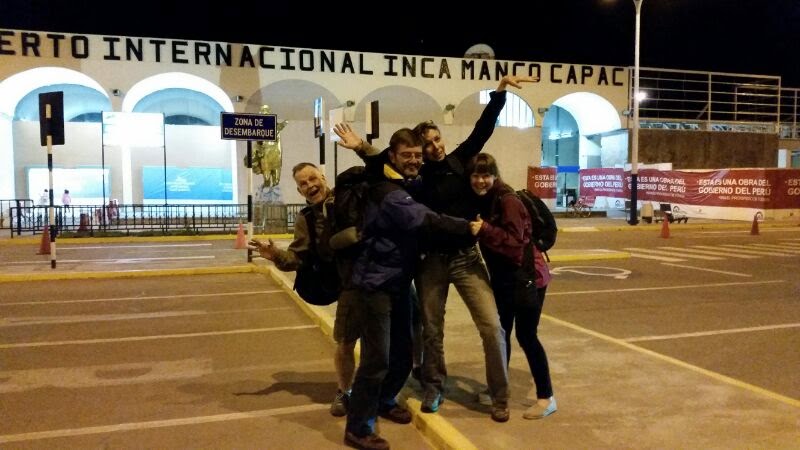






















































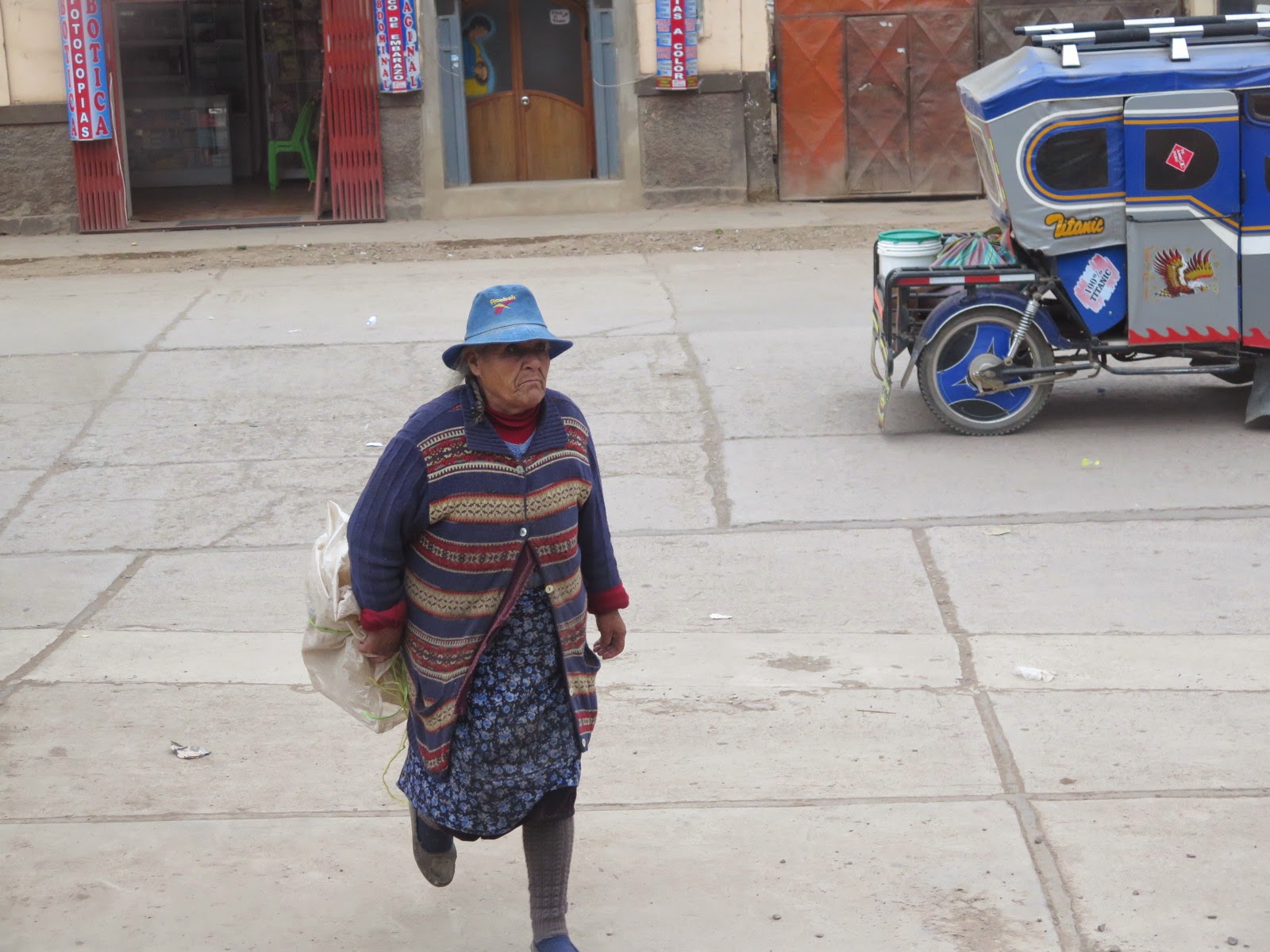













































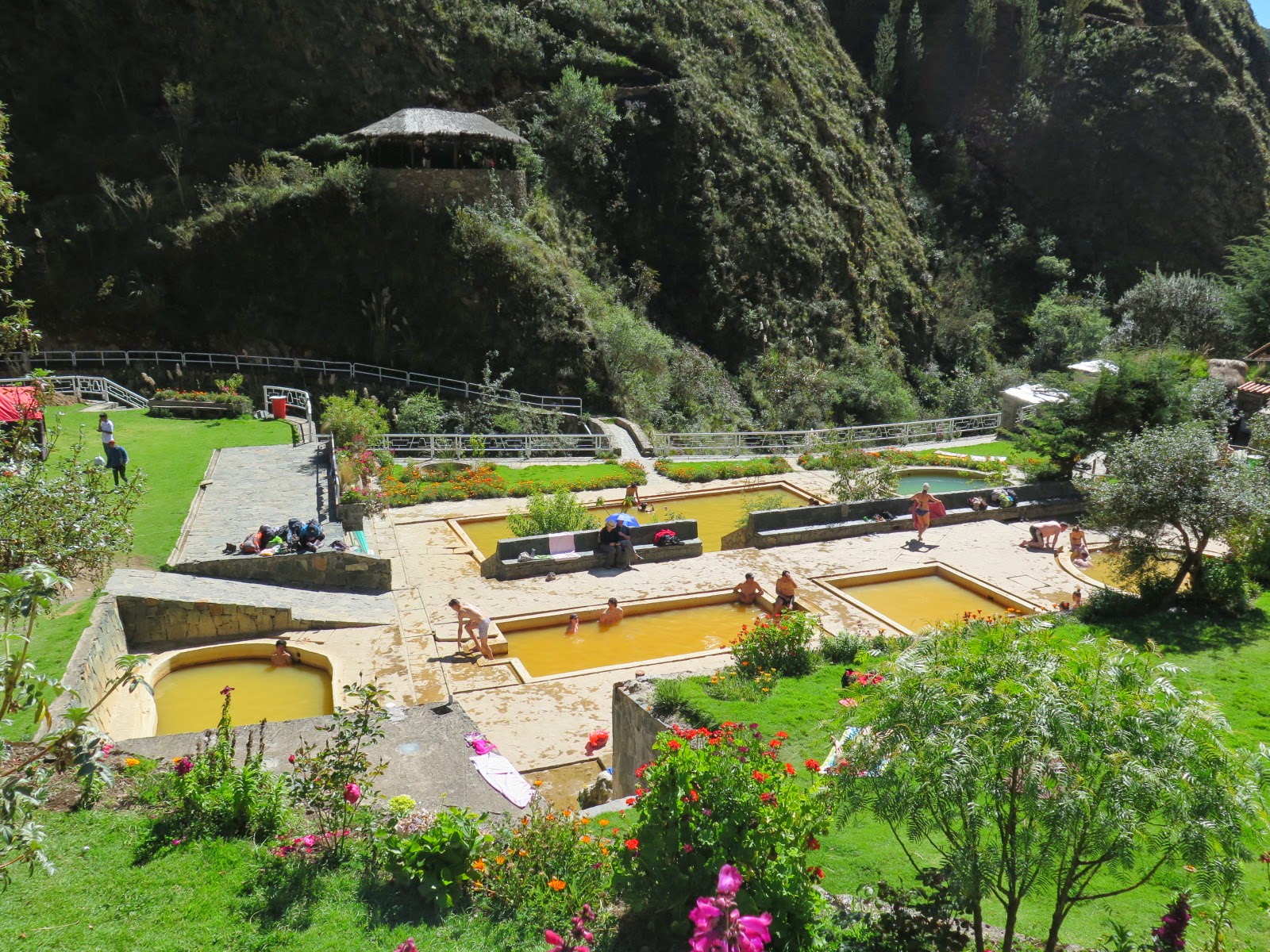






















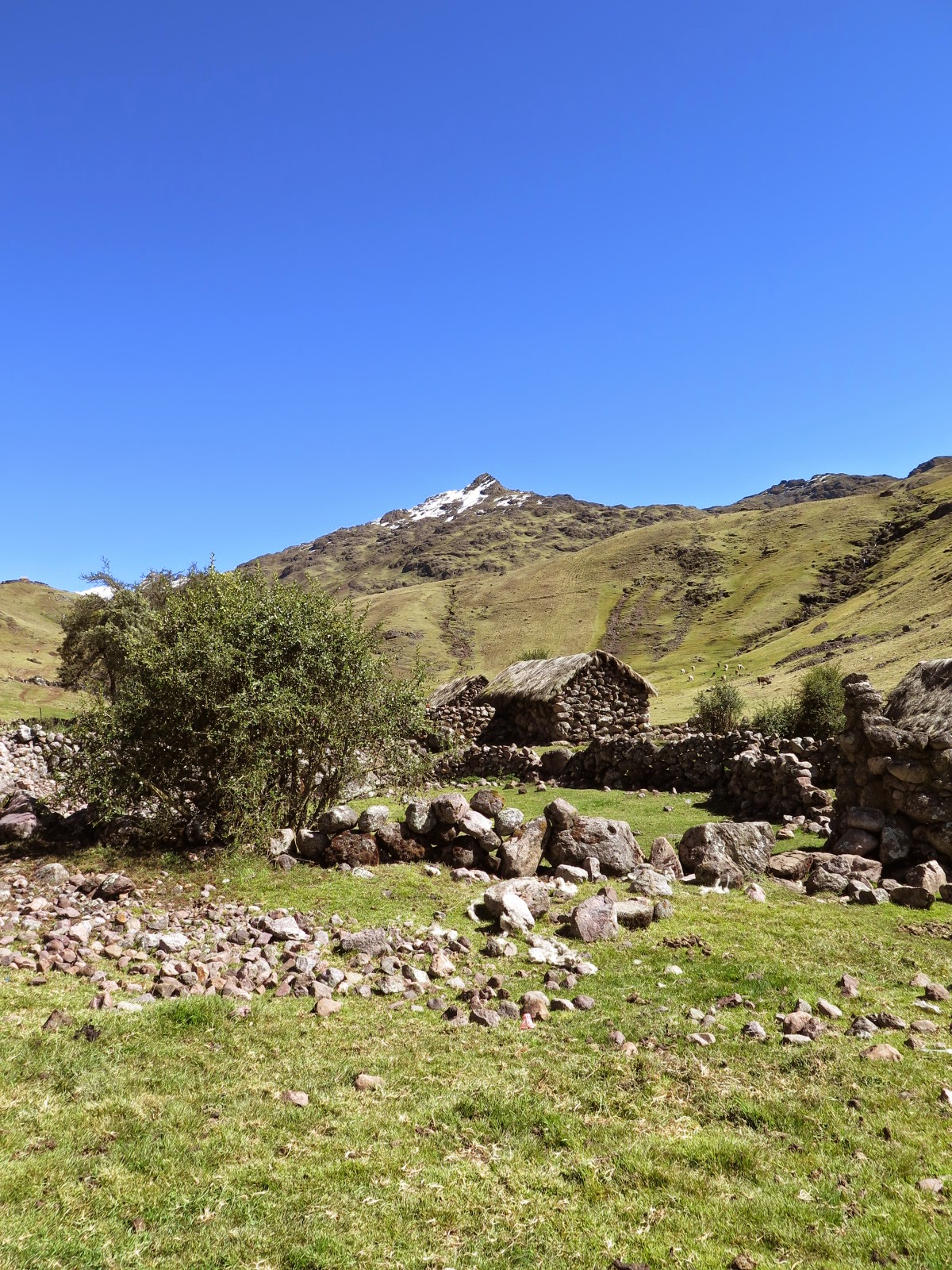






































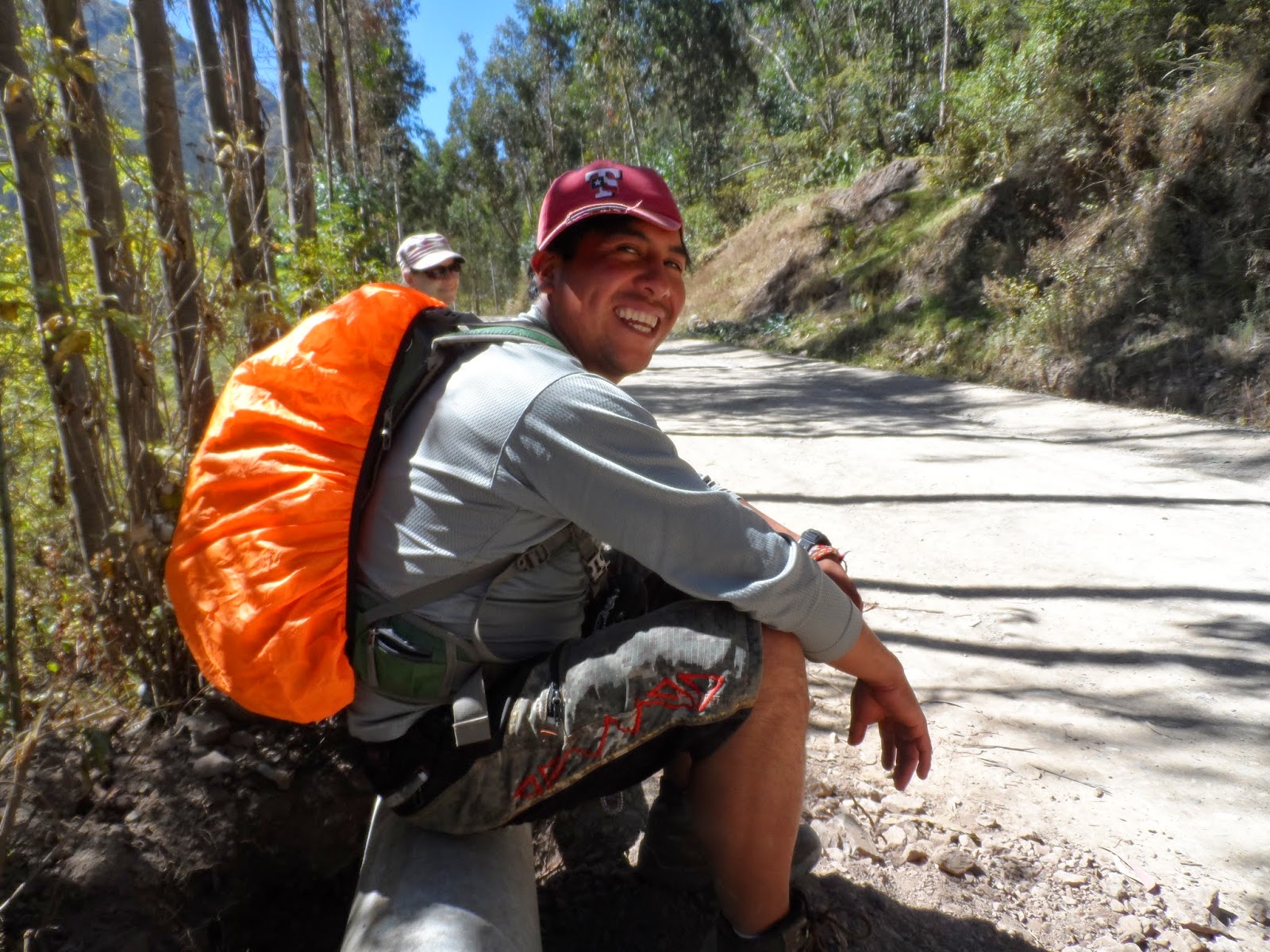






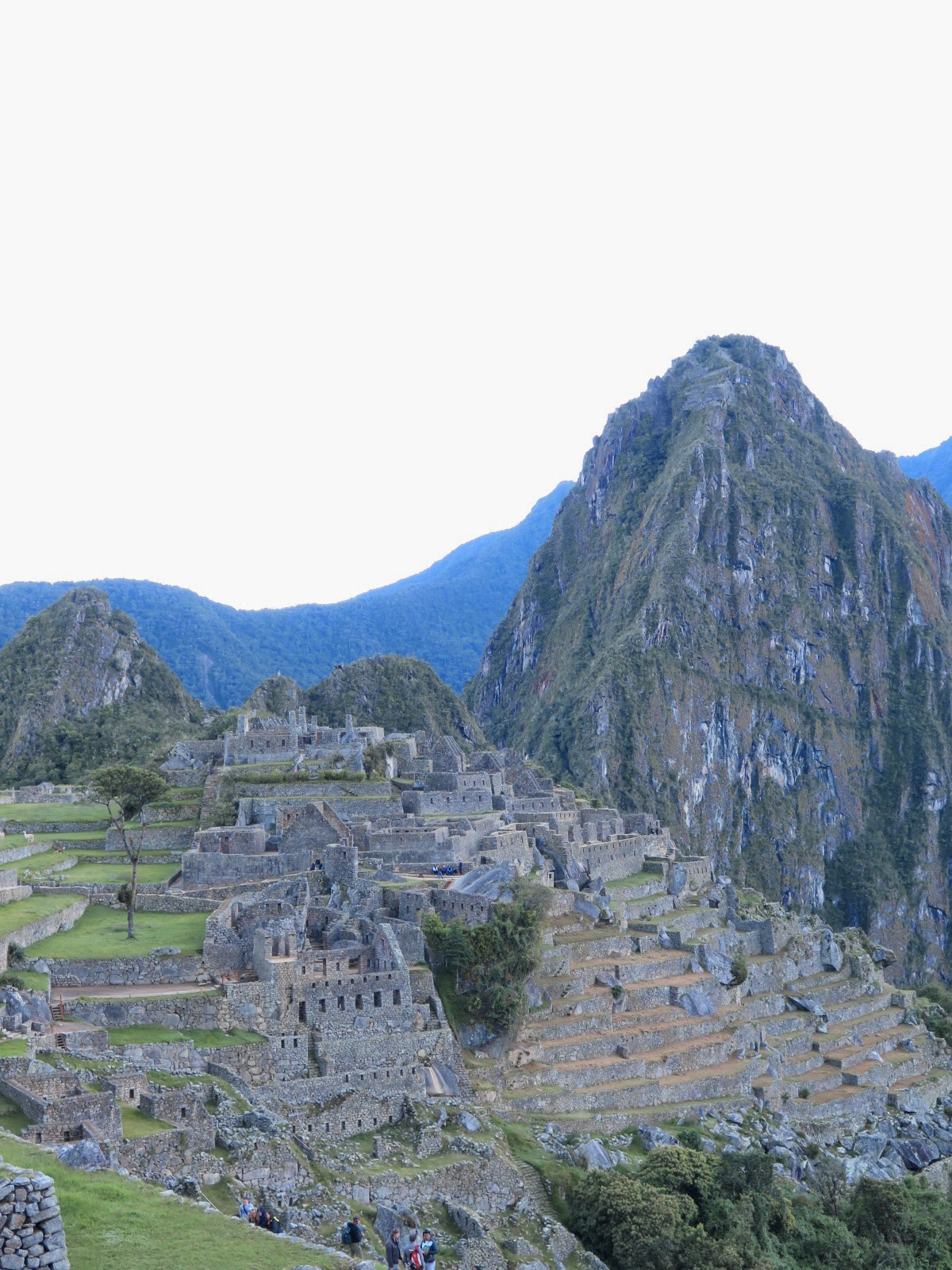













































No comments:
Post a Comment